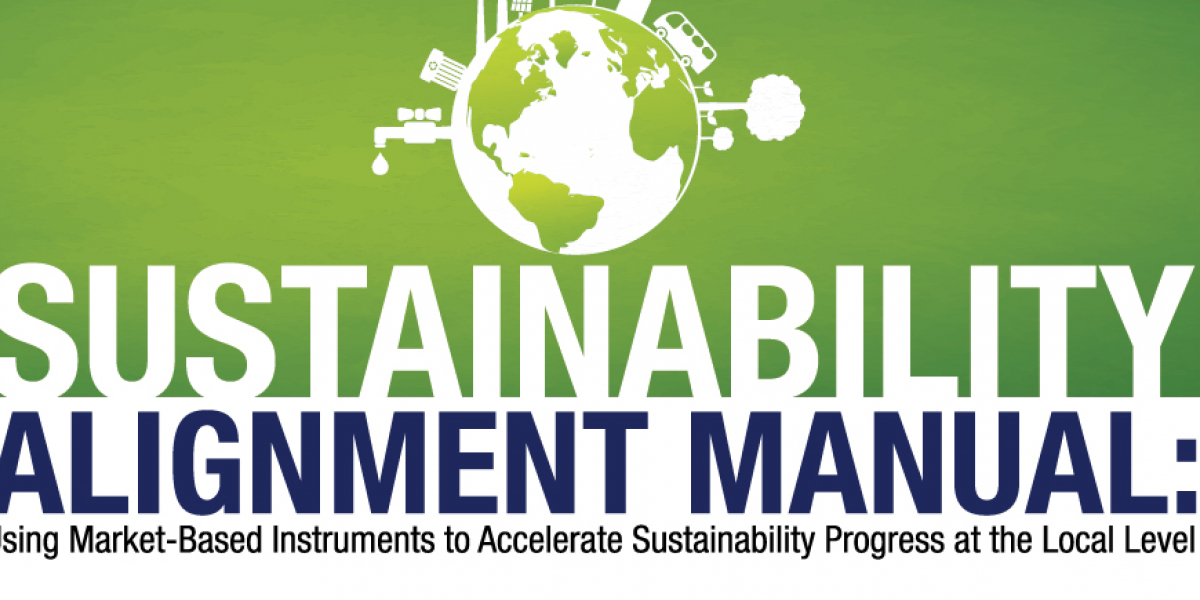
Recently, Sustainable Prosperity in partnership with Dr. Amelia Clarke from the University of Waterloo published the Sustainable Alignment Manual (SAM). SAM is an inventory of market-based instruments that will help municipalities achieve the environmental goals they’ve set in their Sustainability Community Plans.
Municipalities are facing important and related gaps
Municipalities across the country are facing two seemingly intractable agendas.
Municipalities are finding it difficult to implement strategies that will help them achieve the environmental, social and economic goals set in their Sustainability Community Plan. This “implementation gap” represents lost environmental and economic opportunities across the country.
At the same time, municipalities are facing revenue challenges due to increased responsibilities and decaying infrastructure. They rely too heavily on property taxes which do not provide any incentives for environmental performance, and which are difficult to increase for political reasons.
The key is getting the price signals right. By adjusting the incentives sent through municipal user fees, charges, and taxes, municipalities can unleash financial incentives for environmental performance while diversifying and possibly amplifying revenue sources for municipalities.
Increasing implementation of market-based instruments is an effective and equitable way to achieve this shift.
Market-based instruments as tools to achieve the goals of sustainable community plans
Market-based instruments (MBIs) adjust market signals to better incorporate environmental and social costs and benefits that are not traditionally included in market transactions. An example of an MBI would be introducing a garbage bag tag system for households to recognize the environmental costs linked to landfilling of solid waste.
Some of the advantages of using MBIs are that they offer compliance flexibility and continuous incentives for improvement. Many of a municipality’s environmental issues and goals can be met at lower cost using MBIs instead of solely relying on regulation.
However, it is important to note that MBIs should be seen as complements to existing municipal processes and regulations. There are three main families of MBIs: (1) price-based instruments, such as volume-based water pricing; (2) right-based instruments, such as South Nation River’s water quality trading program; (3) market-friction reduction instruments, such as green labelling or procurement requirements.
During our presentation of this report, it was interesting to note that while most municipal planners are aware of MBIs, few of them actually thought to use MBIs to achieve environmental objectives set in their sustainability plans.
How the sustainability alignment manual can help
This is where SAM steps in. By providing an inventory of MBIs listed by the main environmental topics found in SCPs, the manual can help municipal decision-makers and influencers identify potential tools that will support their sustainability goals.
MBIs are categorized into the eight environmental topics most prevalent in SCPs, listed by order of prevalence (i.e. transportation, water, solid waste, air quality and energy, land-use, climate change, food security and ecological diversity). Below is an example of the MBIs listed that support transportation objectives. Accompanying this inventory in the report is a glossary that provides definitions for each MBI.

This manual should be seen as a first step in the implementation process of using MBIs to support the SCP goals established by a municipality. There exist important considerations in terms of the design of the MBI, the interaction of the policy within the local context and with existing policies, and the need for complementary processes and policies.
While the Sustainability Alignment Manual was presented, one participant asked what level (or stringency) should a price be set for a price-based instrument (for example, the price per volume of water)?
This is a great question. Before thinking of the specific level, municipal planners must examine whether their existing policy signals currently align with their SCP goals. For many municipalities, this could mean introducing user fees or shifting from flat user fees to a variable structure. Once the proper signal is set, then an initially low price can be ramped up over time.
Theoretically, the optimal level is one that accounts for all private and environmental costs (e.g., ensures cost recovery), and considers other dimensions such as equity that are likely to be considered through a political process. The fairness of an increased use of MBIs (i.e. whether they overburden low-income families) in municipalities was raised during the SAM presentation. By shifting revenue generation away from property taxes, which are known to be regressive, municipalities could actually increase the overall fairness of their policies. Additionally, through smart MBI design, municipalities can shield the most vulnerable, for example with targeted relief programs or through tiered pricing, such as pricing only in excess of a base level.
SAM aims to help municipalities achieve their environmental goals by outlining various MBIs based on the most prevalent environmental topics in sustainability plans.
Download the Sustainability Alignment Manual here.
In late October, SP’s Stephanie Cairns and University of Waterloo’s Dr. Amelia Clarke presented SAM at the Clean Air Council Summit, a meeting of municipal mayors and planners from across Southern Ontario. You can see the powerpoint and video of that presentation here.